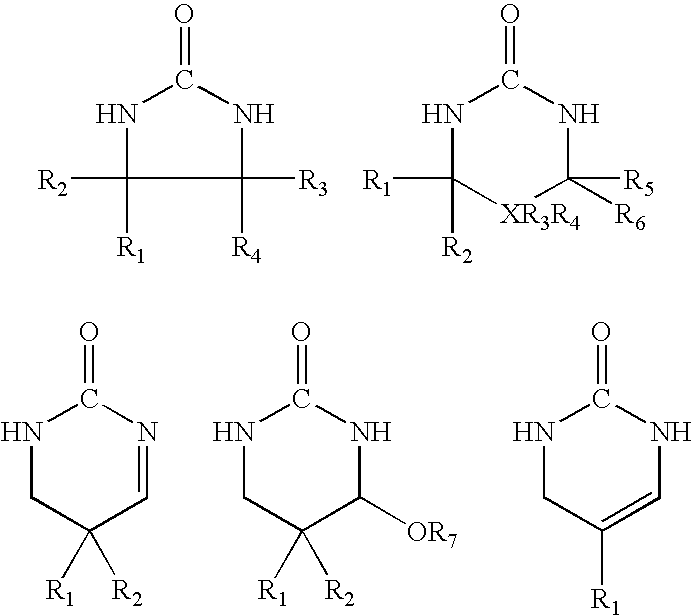Polymer-aldehyde binding system for manufacture of wood products
a polymer and aldehyde technology, applied in the direction of colloidal chemistry, colloidal chemistry details, adhesive types, etc., can solve the problems of resin-bonded wood products, slow cure time, and low ph for cure tim
- Summary
- Abstract
- Description
- Claims
- Application Information
AI Technical Summary
Problems solved by technology
Method used
Image
Examples
example 1
Control
[0044] PVOH solution was prepared by adding a sufficient amount of solid PVOH (Celvol 502 by Celanese, 88.5% hydrolyzed) to water to form a 35wt % solution. The mixture was stirred at 80° C. until complete dissolution, and then cooled down to room temperature. 100 grams of PVOH solution were mixed with 31 grams of 40wt % glyoxal. The final composition was clear, homogeneous, and had infinite water dilutability. However, it gelled in 10 minutes at room temperature. This example shows that unblocked glyoxal cannot be used with concentrated PVOH solutions.
example 2
Preparation of Blocked Glyoxal (1)
Urea-Glyoxal Condensate (UG-1; 1:3 Molar Ratio):
[0045] To a 1-liter 3-necked flask equipped with a mechanical stirrer, reflux condenser, and thermometer were charged 225 grams of glyoxal (40wt %) and 30.0 grams of urea. Low heat was applied with constant stirring and the temperature gradually increased to 45° C. After 15 minutes, a uniform solution was obtained. The condensation mixture was held at a constant temperature of 45° C. with constant stirring for the next 4.5 hours. At the end of this period, the pH of the solution was 2.1. The condensation mixture was cooled to 25° C., and pH was adjusted to 6.9 by 50% sodium hydroxide. The resulting product (UG-1), a colorless clear liquid had 47 wt % solids, and viscosity 270 cps. The composition was stable for at least 3 months.
example 3
Preparation of Blocked Glyoxal (2)
Urea-Glyoxal Condensate (UG-2; 1:2 Molar Ratio):
[0046] The procedure of Example 2 was repeated with an exception that 150 grams of glyoxal (40wt %) and 30.0 g urea were used. At the end of the cook, the resin was neutralized by 50% sodium hydroxide and then concentrated by removing water under vacuum at 50° C. The resulting product (UG-2) was a clear colorless liquid with 63 wt % solids, pH=6.3, and viscosity 960 cps. The composition was stable for at least 3 months.
PUM
| Property | Measurement | Unit |
|---|---|---|
| Temperature | aaaaa | aaaaa |
| Fraction | aaaaa | aaaaa |
| Viscosity | aaaaa | aaaaa |
Abstract
Description
Claims
Application Information
 Login to View More
Login to View More - R&D
- Intellectual Property
- Life Sciences
- Materials
- Tech Scout
- Unparalleled Data Quality
- Higher Quality Content
- 60% Fewer Hallucinations
Browse by: Latest US Patents, China's latest patents, Technical Efficacy Thesaurus, Application Domain, Technology Topic, Popular Technical Reports.
© 2025 PatSnap. All rights reserved.Legal|Privacy policy|Modern Slavery Act Transparency Statement|Sitemap|About US| Contact US: help@patsnap.com

